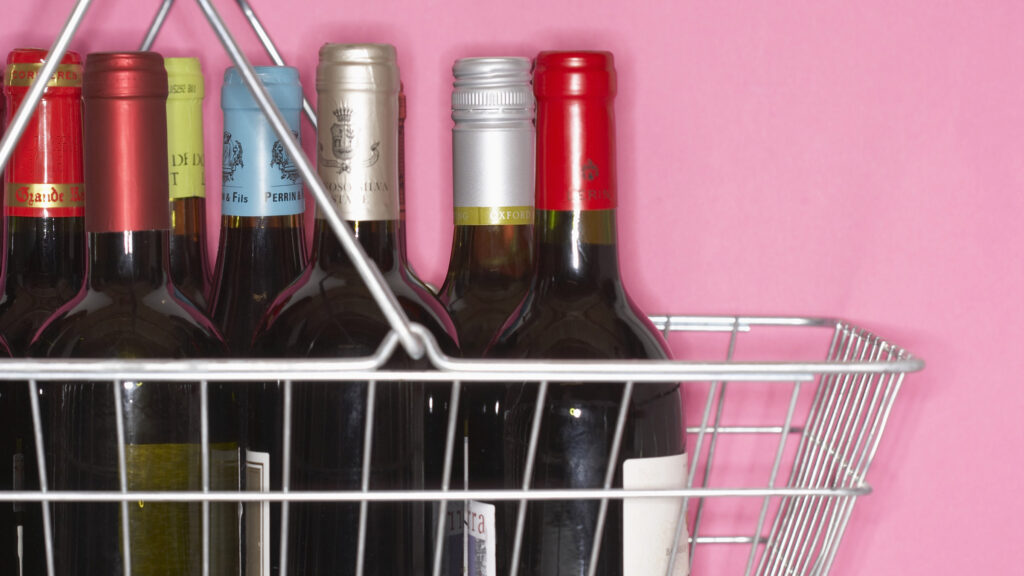Breadcrumb
Food, Alcohol & the Pandemic
By Debra Venzke
Published on July 7, 2021
How has the pandemic affected our eating and drinking habits and health?

The pandemic has disrupted almost every aspect of everyday life, including how we eat and drink. Many people are coping with stress and isolation by turning to comfort foods and alcohol. For others, the economic fallout makes it a struggle to put meals on the table. College of Public Health researchers are looking at how profound changes to our food systems and daily habits have affected people’s health and well-being.
Pandemic Pounds
Stress-snacking, Zoom happy hours, and reduced physical activity have added up to extra pounds— the so-called quarantine 15—for many of us.
Staying at home so much means “we’re closer to food all the time,” notes Linda Snetselaar, professor and chair of preventive nutrition education in the Department of Epidemiology. Working remotely and binging Netflix often means sitting in a single spot and getting less exercise than is typically built into a day. “Burning calories is not happening,” Snetselaar says.
In a survey of U.S. adults conducted in February 2021 by the American Psychological Association, a majority (61%) reported experiencing undesired weight changes since the start of the pandemic, with more than 42% saying they gained more weight than they intended. Of this group, adults reported gaining an average of 29 pounds (with a median gain of 15 pounds), and 1 in 10 said they gained more than 50 pounds.
Overweight or obesity can have serious health consequences, including a higher risk for severe illness from COVID-19, type 2 diabetes, coronary heart disease, and stroke.
One positive change brought about by the pandemic is that people are cooking at home more. “People who eat at home tend to eat a more healthy diet,” Snetselaar says. “Plus there’s more time to sit down and eat as a family and socialize.”
Food Insecurity
As COVID-19 spread across the United States in early 2020, millions of people lost their jobs or had their hours reduced, driving up unemployment and poverty.
Feeding America, the largest hunger-relief organization in the United States, reports that before the start of the pandemic, the overall food insecurity rate had reached its lowest point since it began to be measured in the 1990s. The pandemic quickly overturned those improvements. The organization estimates that 45 million people, including 15 million children, may have experienced food insecurity in 2020.
Feeding America estimates that 45 million people, including 15 million children, may have experienced food insecurity in 2020.
Patrick Brady, a doctoral candidate in community and behavioral health, recently completed a project with the Iowa Department of Public Health and the Iowa Food Bank Association to evaluate how the COVID-19 pandemic has impacted older Iowans’ ability to obtain food and to develop recommendations to better meet the needs of food-insecure older Iowans.
Although the results of the project won’t be published until this summer, Brady says that, in general, “those who were already vulnerable were impacted more” by the pandemic.
Brady says a key policy that helped lessen the impact of the pandemic on food insecurity was the substantial increase in Supplemental Nutrition Assistance Program benefits, which also allowed some food-insecure Iowans to obtain a more healthful and varied diet. Another important resource has been food banks. “They play a huge role in making sure food needs are met,” Brady says.
Food banks are thinking creatively about how to serve people with transportation barriers or special health needs. Snetselaar is working with food pantries in Johnson County, Iowa, on a proposal that would deliver boxes of healthy foods to people in need, along with access to an app to help track how healthy their diet is. She’s also working with colleauges in obstetrics on an idea to write a prescription for a box of healthy food at a local food pantry for people who have diabetes and are pregnant.
School Meal Challenges

During a normal school year, 22 million kids nationwide depend on the National School Lunch Program for free and reduced-price meals. COVID-19 threw K-12 schools and meal programs into chaos.
“The pandemic has dramatically changed school nutrition,” says Natoshia Askelson, assistant professor of community and behavioral health.
Among the biggest changes were the federal requirements for school meals. “Previously, they were under the Healthy Hunger-Free Kids Act,” Askelson explains. “Now, for emergency purposes, they’re under the Summer Food Service Program. It’s less restrictive, which makes it easier for food service directors to meet the criteria and still get food out the door.”
Nutrition directors also had to plan around fluctuations in student numbers as community positivity rates and attendance policies rapidly shifted.
“Are students going to be in person, online, or hybrid? What’s happening next week?” Askelson says about the constant changes. “Food service directors usually have a cycle menu that’s six weeks, so how do you buy food or budget for the unknown?”
To add to the budgeting woes, supplies like food service gloves increased in price, as did costs for “all the individual food packaging, extra sneeze guards, and plexiglass,” Askelson notes.
To ease the financial burden on families, the U.S. Department of Agriculture extended flexibilities to allow free meals to continue to be available to all children, regardless of household income, throughout the entire 2020-2021 school year.
“There’s lots of concern about what that particular issue will mean in the fall if it doesn’t continue, and all of a sudden parents have to start paying again,” Askelson says.
With so many unknowns, nutrition directors are facing tough challenges as they look toward the next school year, but Askelson has confidence in them.
“I think school nutrition directors are some of the heroes of the pandemic,” she says. “They were able to pivot, even when schools were shut down last March. They’ve always been concerned about the most vulnerable kids and if kids are getting enough to eat. I’m so impressed by them and appreciative of their efforts.”
Alcohol Consumption

Alcohol researchers expected that drinking would increase during the pandemic, and they were right. “We have emerging evidence that drinking has gone up in the U.S. and Iowa,” says Paul Gilbert, assistant professor of community and behavioral health.
“Drinking is a really common coping response to stressors. We have evidence that after disasters or catastrophic events, drinking increases. We see this pattern over and over again,” he says. “Iowa also had the derecho in August 2020, which was another stressor that may push drinking up.”
Iowa saw an increase in alcohol sales starting in April 2020. By the end of the year, sales records were shattered. The Iowa Alcoholic Beverages Division (ABD) announced that liquor sales for December 2020 reached $42.8 million, making it the highest grossing month for liquor sales in Iowa ABD history.
“Sales data doesn’t always tell us what people are doing,” Gilbert cautions. “They may be stocking up, for example. But three national surveys have been conducted, each showing drinking increases among those who already drink, and an increase in binge drinking.”
The surveys revealed that lockdowns are associated with heavy drinking and that some groups may be more likely to drink heavily. One national survey found greater increases in drinking among women, Black respondents, and people with children in the household.
As drinking increases, so do problems related to drinking. To reduce the risk of alcohol-related harms, the 2020-2025 Dietary Guidelines for Americans recommends limiting intake to two drinks a day for men and one drink a day for women. Above that amount is considered hazardous or risky drinking. Binge drinking is defined as five or more drinks in one occasion for men, and four or more for women.
An additional concern is the effect of drinking on risk of COVID. “Alcohol also weakens our immune system, so it’s plausible that it could increase our susceptibility to and severity of COVID infection,” Gilbert says.
Recently there has been growing interest in moderated drinking. “Dry January” is a movement that encourages people to take a break from alcohol for a month after the holidays. Gilbert says the concept received a lot of attention this year.
“It’s an opportunity to reflect on the role of alcohol in your life and assess whether you need help,” he says.
By putting a pause on drinking, “you might notice how quickly you feel better, sleep better, and maybe lose a little weight,” Gilbert says.
Looking Ahead
As we begin to emerge from the pandemic, what’s on the horizon for eating and drinking habits?
“The immediate concern is what will happen in two or three years if people don’t return to lower, prepandemic levels of drinking, and what’s in the near future in terms of services for people who need help with problems that started during the pandemic,” says Gilbert.
“Food insecurity is not going away with stimulus money or once everyone is vaccinated,” Brady says. “We need a much more comprehensive approach.”
Brady points out that there has been “a huge increase in recognition of food insecurity as an issue.” Feeding America projects that 42 million Americans may experience food insecurity in 2021. It also notes that significant racial disparities in food insecurity that existed before COVID-19 remain in the wake of the pandemic.
“Food insecurity is not going away with stimulus money or once everyone is vaccinated,” Brady says. “We need a much more comprehensive approach.”
On a positive note, Snetselaar urges people to contemplate how the pandemic may have improved some of their eating habits. “Was there more time for food preparation and eating in a calmer and less hurried manner? How can we hang on to the things that are good for us?”
This story originally appeared in the spring 2021 issue of InSight magazine